The events of 15 March 1848 merged mainly with the figure of Sándor Petőfi, who, through his youthful fervour and temperament, became the central figure of the revolutionary day and events not only in posterity but also in the eyes of his contemporaries. Of the events of that day, the Museum Garden has become perhaps one of the most emblematic venues, where at three o’clock in the afternoon, despite torrential rain, more than 10,000 people gathered to hear the inspiring speech of the youth of March at the people’s assembly.
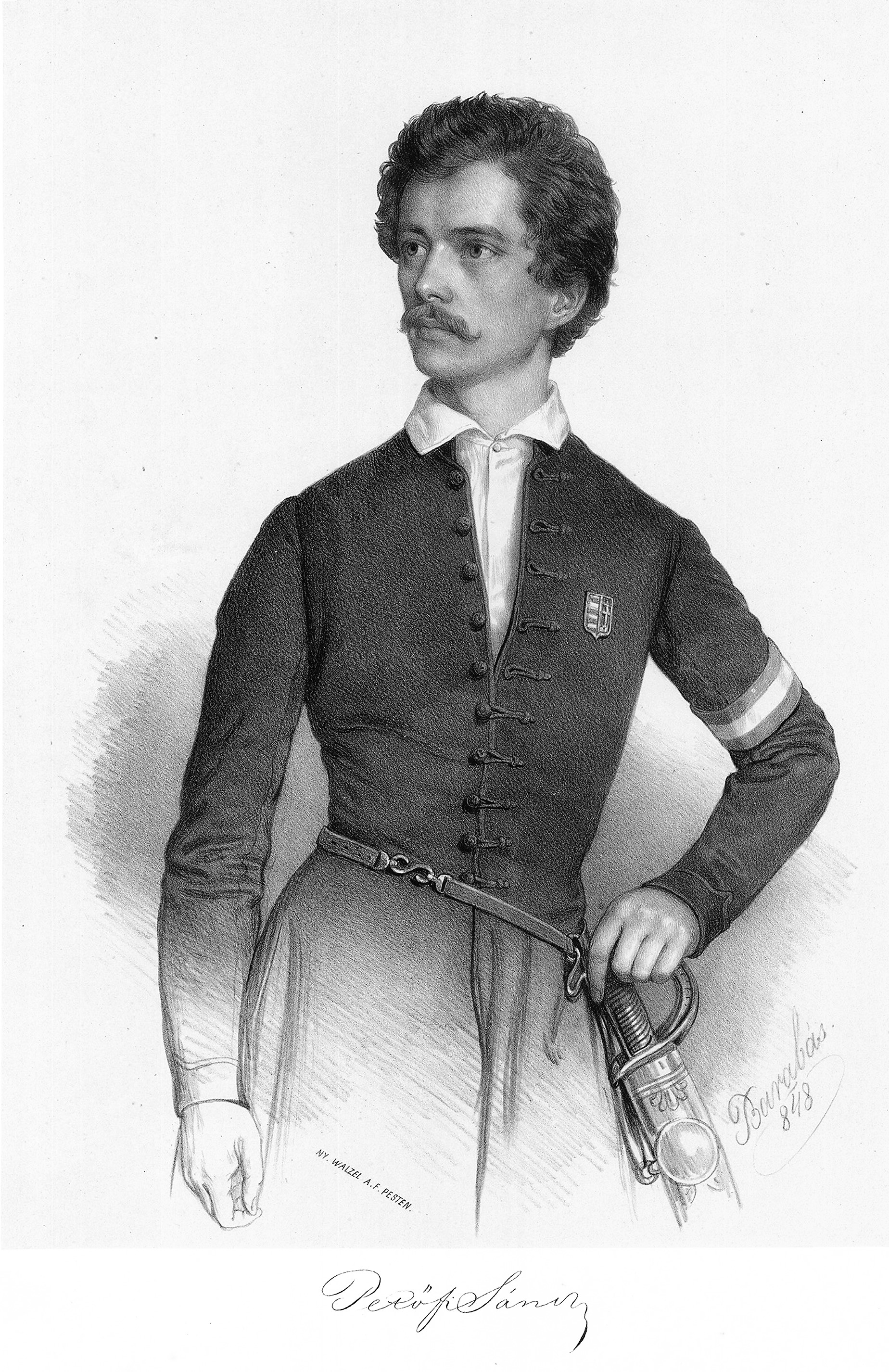
Miklós Barabás: Sándor Petőfi (1848)
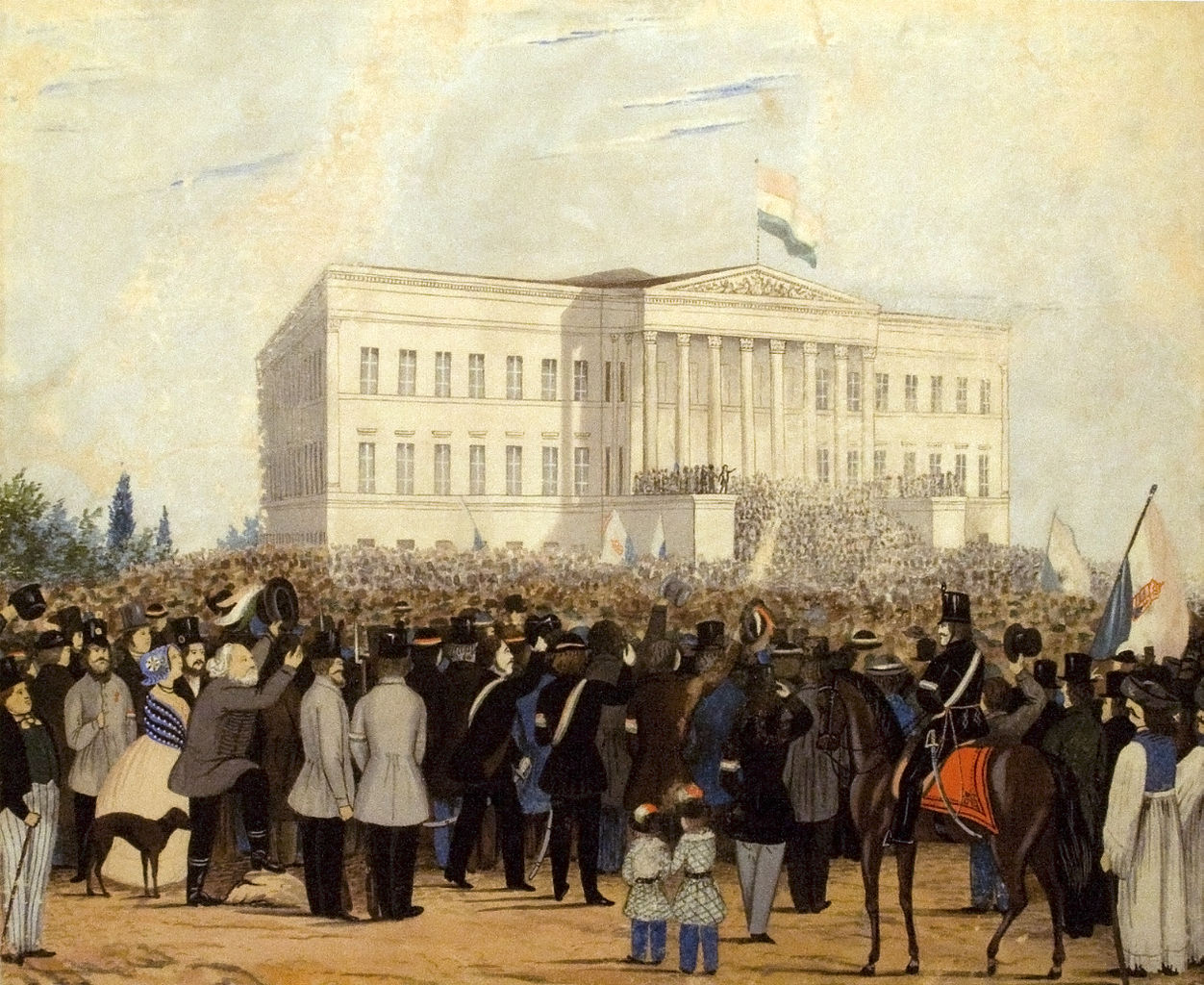
The crowd gathered in front of the National Museum on 15 March 1848. Watercolor by an unknown artist (Source: Wikipedia).
The area around the National Museum was, of course, a familiar place for the poet, who became the central figure in the revolutionary events, as there were several buildings in the area where he had spent his time a half decade earlier during his stay in Pest. On the day of the revolution, he appeared as a mature and well-known poet in front of a crowd gathered at the museum, but in 1843–1844 he visited some of the surrounding buildings as a young man seeking another place and profession. These were the occasional accommodations without permanence, which included both an inn and a rental apartment.
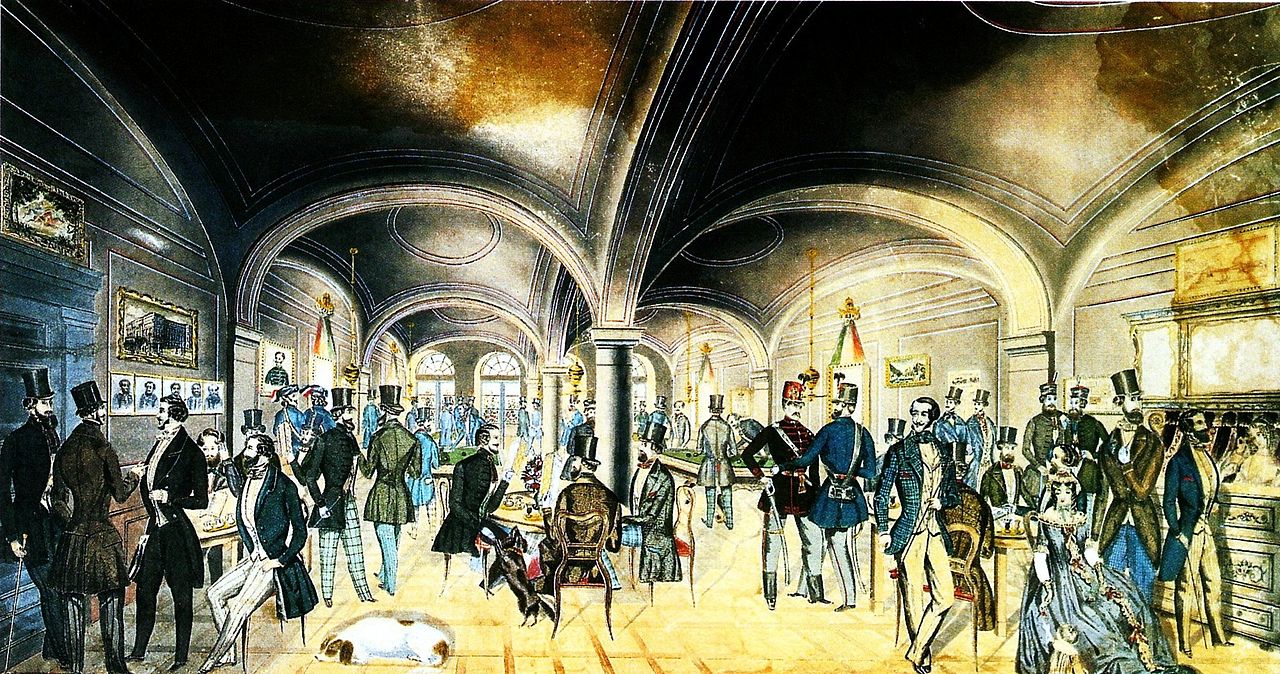
The Reform-era Pilvax Café, where Petőfi recited the National Song on 15 March 1848. And here, in 1843 he also met his former classmate, Lajos Fekete, who then invited him and shared his accommodation with him for a short time. Coloured pen drawing of József Preiszler (Source: Wikipedia).
At the corner of the National Museum, at the junction of Baross (then Stáció) and Múzeum Street, stood the Two Pistols Inn, which became infamous in the 1860s and became an inn, and which was no longer a trusted place in Pest. The sinking of the inn, in the true and figurative sense of the word, began after the flood of 1838, and as early as the 1840s, the formidable fame that was known to almost the entire city two decades later developed. According to the remembrance of Frigyes Podmaniczky, during the Reform-era, Hungarian music could at least be heard in Pest here or the other end of the Országút (today's Múzeum Boulevard), in the Zrínyi Inn on the site of the Astoria Hotel.
The Two Pistols Inn was a nest for passers-by and trade fairists, in whose small café section opening onto the street, intellectual groups sometimes met in the 1840s. In addition to the poet Kálmán Lisznyai Damó, and writer Gusztáv Lauka, Petőfi also visited this quite bad but cheap place in 1844.

The National Museum and to its right on the corner of Múzeum Street are the Two Pistols Inn in 1845. Drawing by Rudolf Alt (Source: FSZEK Budapest Collection).
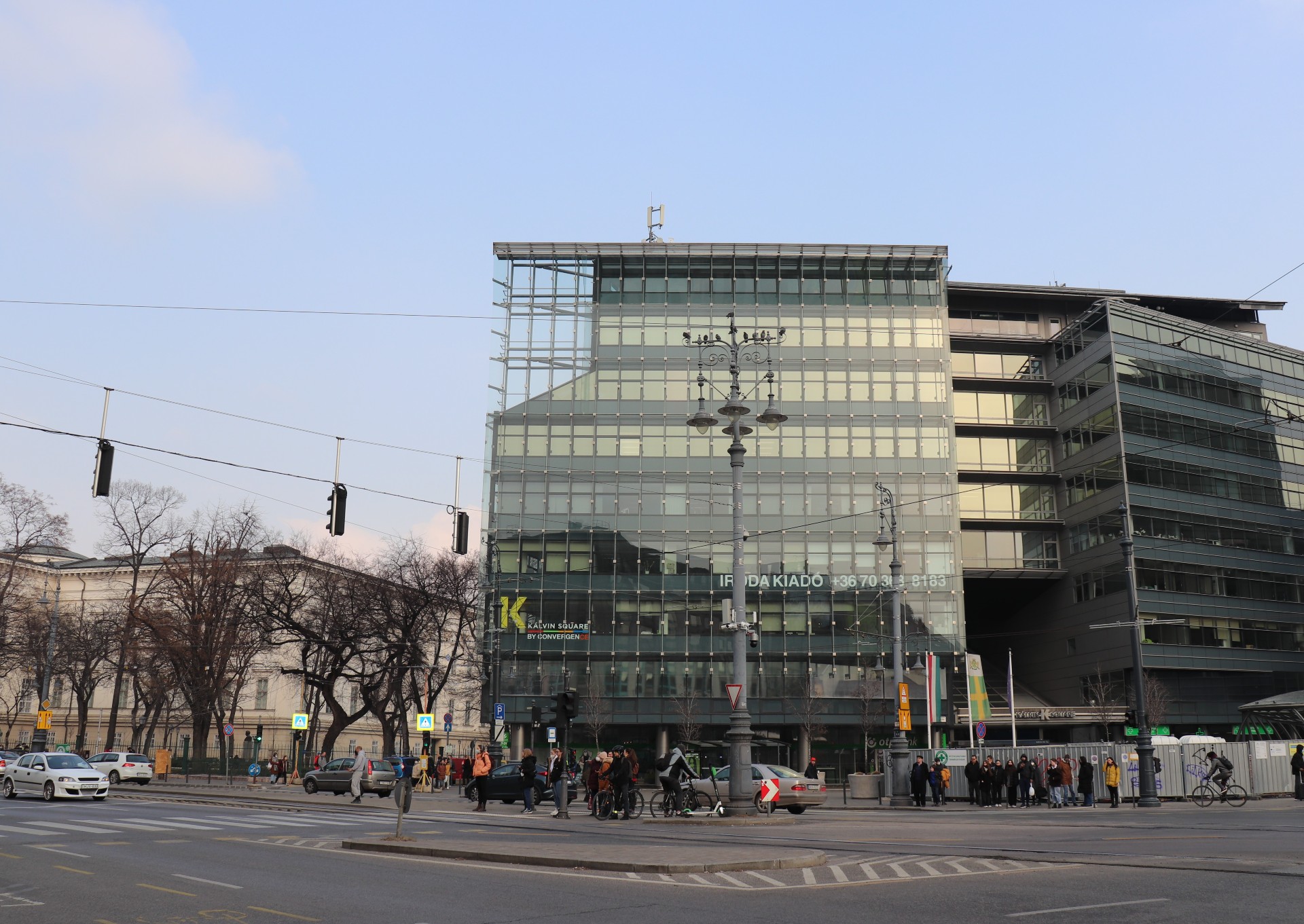
On the site of the former inn, there is a modern office building built between 1998 and 1999 (Photo: Zsolt Dubniczky/pestbuda.hu)
Not far from the inn was the one-storey house at 5 Stáció (now Baross) Street, where Petőfi lived with his former classmate from Sárszentlőrinc and Aszód, Lajos Fekete, who later studied law. Petőfi, who had mostly migrated from accommodation to accommodation in Pest, and was a frequenter of the monthly rentable rooms in the contemporary city, met his former classmate at the Pilvax Café in 1843, and when Fekete learned that the poet who had recently arrived to Pest had nowhere to live, he offered a place to stay.
The house opposite the Wenckheim Palace, which now houses the Ervin Szabó Library, was one of the typical ground-floor buildings (only later a floor was built) of Józsefváros, which was then a suburb, where the two young people shared a nearly five-metre-high small room for one or three weeks.
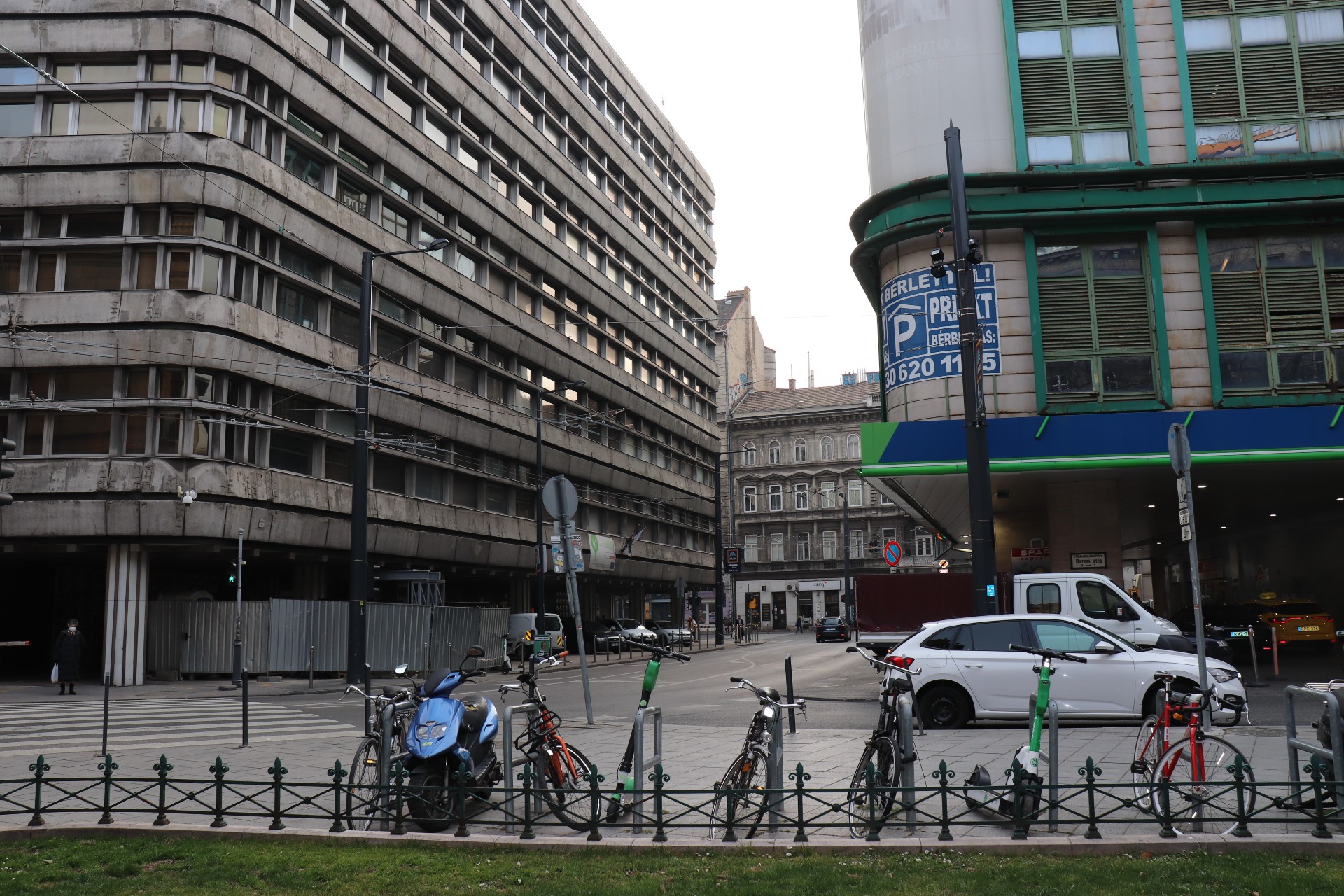
The crossroads connecting Baross Street and Üllői Road were opened in 1972 on the site of the former 5 Stáció Street (Photo: Zsolt Dubniczky/pestbuda.hu)
Lajos Fekete - who by the way tried to write poetry himself - described the poet as "a very lively and natural-minded student [...] because of his eccentric behaviour, he was not very liked by his peers". Nevertheless, when the lease of the room expired, they moved together on the first floor of the house not far from the National Museum, located at 37 Múzeum Boulevard, overlooking the museum and the small gardens around Józsefváros where, according to the former classmate, they spent only one day due to the poor condition of the apartment. Their paths then parted. At that time, Petőfi had no idea that in the course of half a decade he would become one of the central actors and orators of the revolutionary events taking place at the museum garden site opposite.
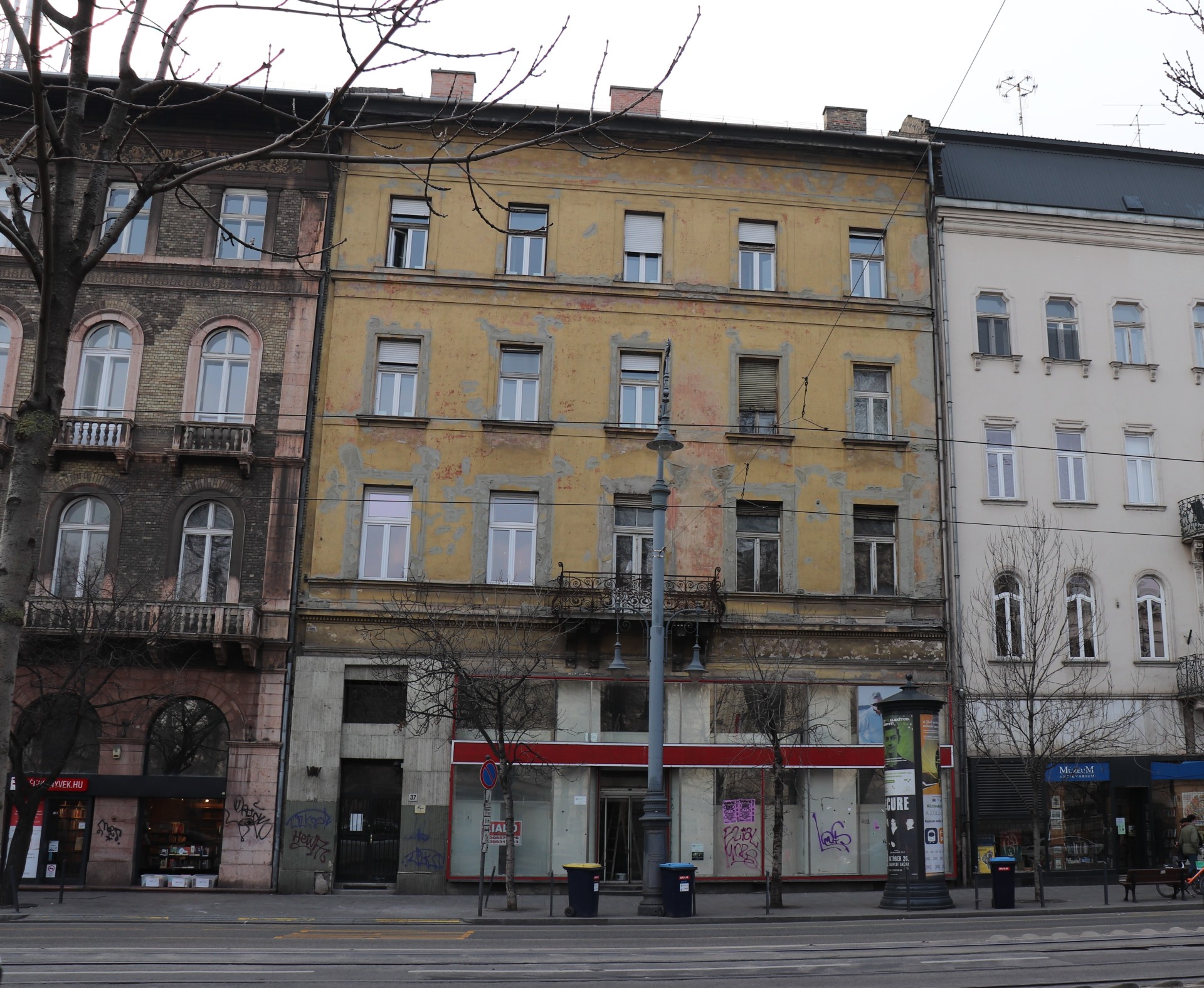
According to the recollection of Lajos Fekete, they lived in the former building on the site of the house on Múzeum Boulevard with Petőfi for only one day (Photo: Zsolt Dubniczky/pestbuda.hu)
One of the well-known buildings in old Pest, the Kunewalder House, was built after the flood of 1838 according to the plans of József Hild on the then Országút, at today's 8 Múzeum Boulevard. Its builders were the Kunewalder Brothers, who made a fortune from the product trade. The classicist-style building, also known as the “Produktenhof”, is lined with fireproof and flood-proof warehouses on the ground floor, while rental flats are lined upstairs. However, due to the growing turnover, it soon, in the early 1840s, when the Petőfi family also lived in it, expanded by one more floor, and later from the 1850s it became the central building of Hungarian medical education.

The Kunewalder House housed Petőfi from 17 June to 29 September 1844. On the right side of the picture, the building of the National Museum can be seen, on the left side is the Botanical Garden (Source: http://konyvtar.univet.hu/fotocd/agyo.htm).
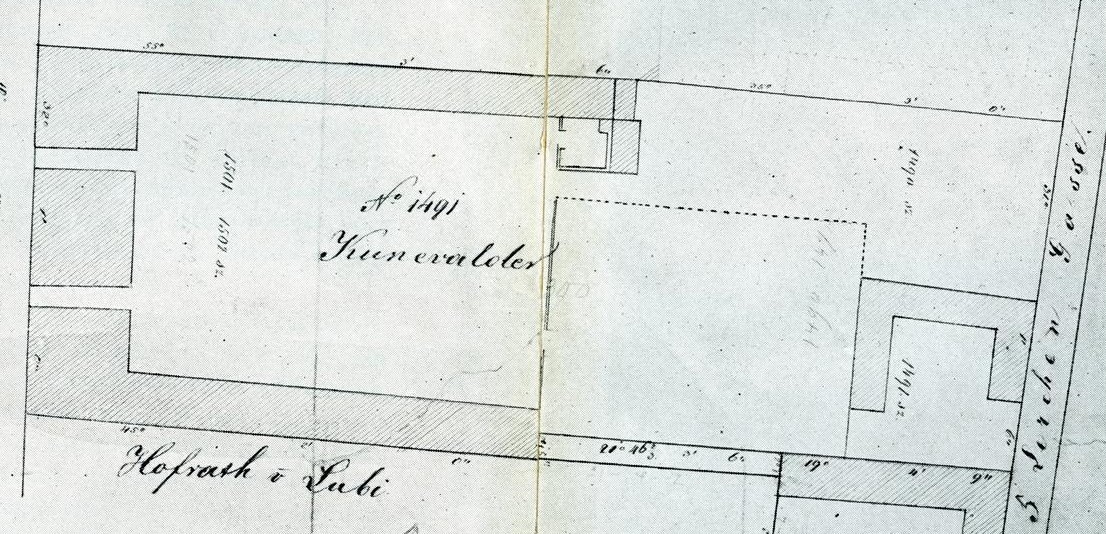
Floor plan of the Kunewalder House along the Országút (today's 8 Múzeum Boulevard) (source: FSZEK Budapest Collection)
In 1843, when he lived with Lajos Fekete on today's Baross Street and along the Múzeum Boulevard, Petőfi cherished not only poetry but acting as well. His journey led him to Debrecen in October, but after a winter full of acting, starvation, cold and illness, his poetic self grew stronger in him. He arrived in Pest again in February 1844, where he took up the position of assistant editor at the Pesti Divatlap, edited by Imre Vahot.
Vahot provided him with not only work but also accommodation, according to the contract, in addition to the 15 HUF per month and the 2 HUF for poems, he also gave him food and accommodation for the young man, who was already entering the field of writing. Vahot's apartment and the editorial office of the Pesti Divatlap were located on the first floor of the Kunewalder House, where Petőfi lived in the maid's room. Its window looks out to the east, to the flooded former Botanical Garden (commonly known as the Herb Garden), today's campus of the Faculty of Humanities of Eötvös Loránd University.
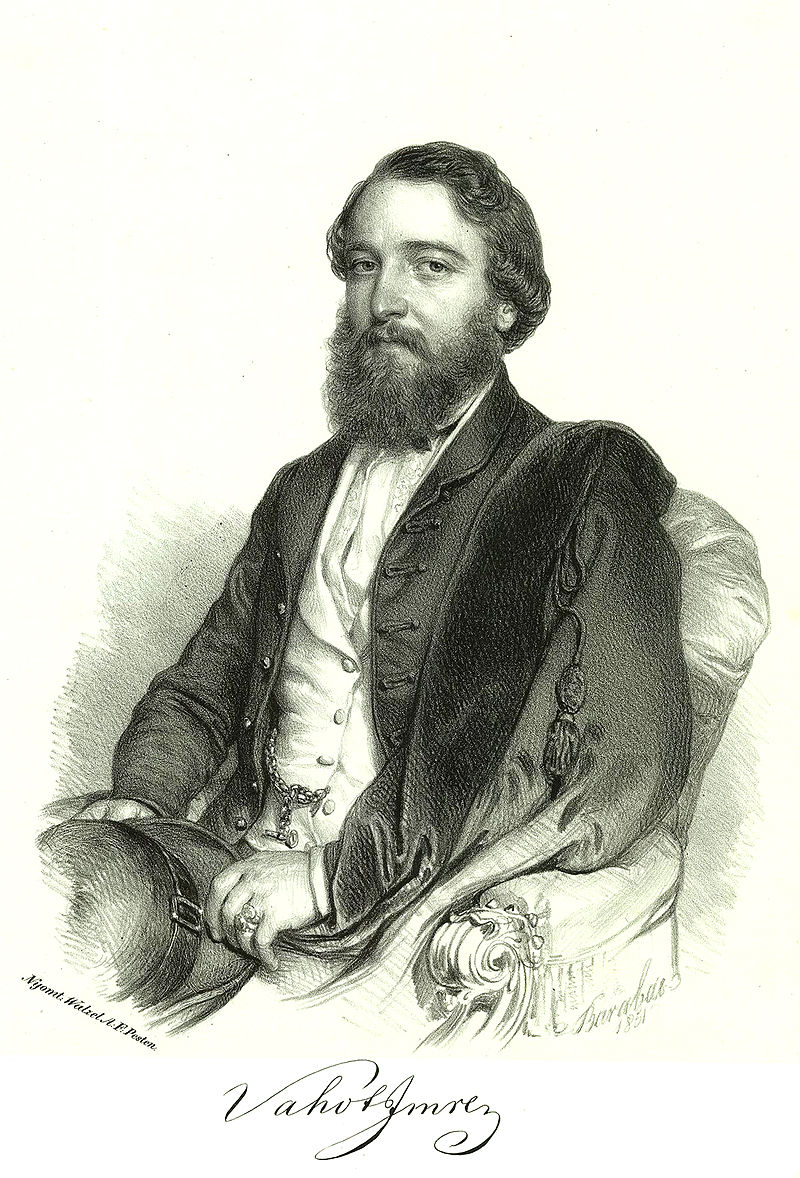
Imre Vahot (born Vachott), editor of the Pesti Divatlap, who in 1844 offered Petőfi not only a job but also shared his apartment in the Kunewalder House with him (Source: Wikipedia)

According to the plans of Imre Steindl, the main building of the Budapest University of Technology was built on the site of the Kunewalder House between 1880 and 1883, where the Faculty of Humanities of the Eötvös Loránd University now operates (Photo: Zsolt Dubniczky/pestbuda.hu)
He spent a total of three months here, between 17 June and 29 September 1844, and then, together with Vahot, they moved into the house of the Kölber car manufacturer, next to the Zrínyi inn, on the corner of Hatvani (now Kossuth Lajos) and Magyar Street.
Cover photo: The crowd gathered in front of the National Museum on 15 March 1848. Watercolor by an unknown artist (Source: Wikipedia).

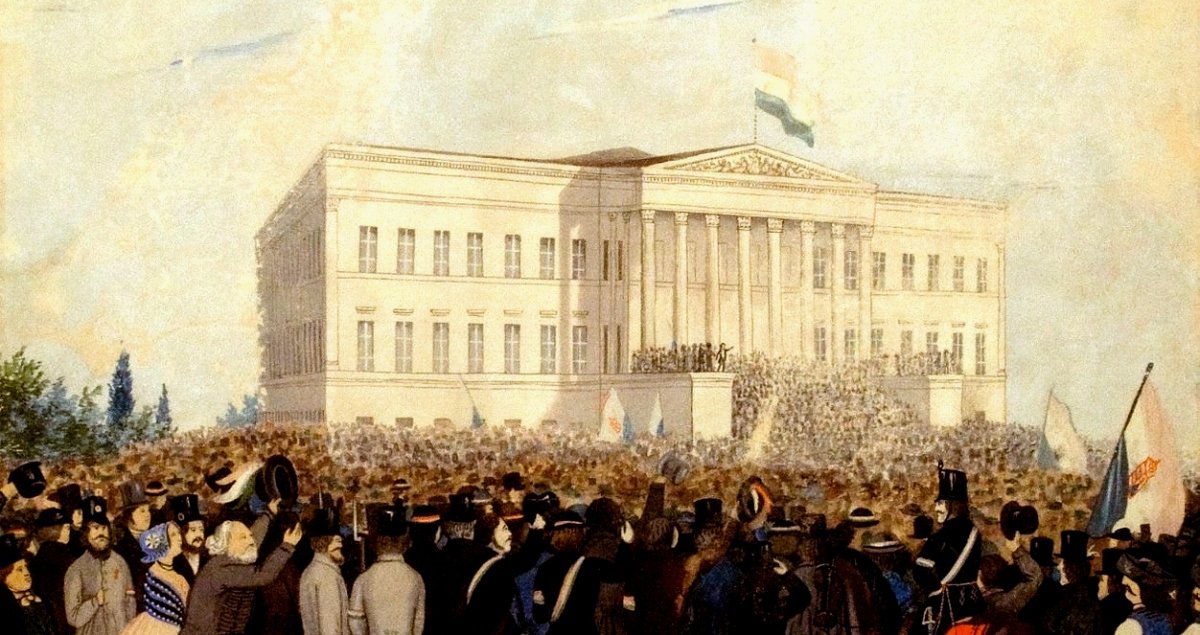


































Hozzászólások
Log in or register to comment!
Login Registration